Share
Working at ESO
Are you interested in working in areas of frontline technology and in a stimulating international environment? Do you feel your profile matches our requirements? Learn more about our current vacancies and apply online. Read more..
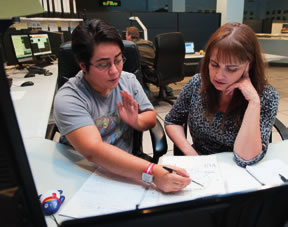
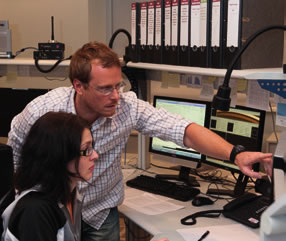

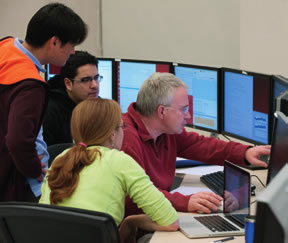
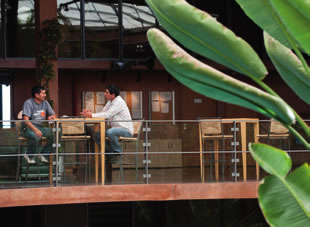

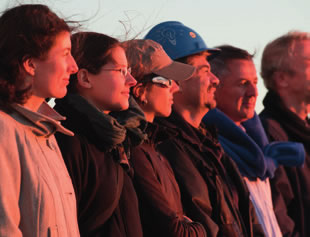
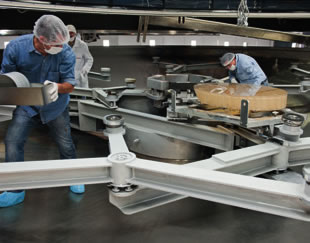
The European Organisation for Astronomical Research in the Southern Hemisphere (ESO) is the foremost intergovernmental astronomy organisation in Europe and the world's most productive astronomical observatory. ESO operates three unique world-class observing sites in the Atacama Desert region of Chile: La Silla, Paranal and Chajnantor. The ESO headquarters are located in Garching, near Munich, Germany. ESO is the focal point for Europe's participation in the Atacama Large Millimeter Array (ALMA) consortium, which is currently constructing a large submillimetre array in the Chilean Andes. The concept and design of a 39-m European Extremely Large Telescope (E-ELT) is also currently underway at ESO.
For the Directorate of Engineering (DoE) at the Headquarters in Garching near Munich, Germany, ESO is offering a grant for a:
PhD in Adaptive Optics Systems Engineering
'Advanced Control Laws for Exoplanet Imaging Adaptive Optics'
Garching
Deadline 12/05/2017
The successful applicant will be part of the Adaptive Optics Systems Group (SAOSY) of the System Engineering Department within the Directorate of Engineering. SAOSY supports telescope and instrument projects at ESO for what regards Adaptive Optics with the ultimate goal to provide the ESO astronomical community with worldwide competitive ground-based Adaptive Optics (AO) observing capabilities overcoming the limitation of atmospheric turbulence. The direct imaging of potentially habitable Exoplanets is one prime science case for ESO's 39-m Extremely Large Telescope, the E-ELT. In order to reach this demanding science goal with the dedicated instrument PCS (planetary camera and spectrograph), a comprehensive R&D programme for the key technologies has been developed. SAOSY is involved in the R&D of the extreme Adaptive Optics (XAO) system, which will control many thousands of actuators at a framerate of several Kilohertz. In order to achieve the highest possible imaging contrast, two major terms of XAO error budget have to be minimized:
- The chromaticity of the refractive index of air leads to slightly different optical wavefronts at the science wavelength (NIR) and the AO wavefront sensing wavelength (red optical). The difference shows up as a residual wavefront error, which is proportional to the incoming uncorrected wavefront and dominates the error budget at the smallest angular separations.
- The finite temporal correction bandwidth of the XAO system leads to an imperfect correction of very rapid changes of the wavefront, which dominate the residual error at somewhat larger angular separations
Task Description
The student will first be asked to investigate how to minimize the effects of refractive index chromaticity and temporal bandwidth error on the XAO residual image by analyzing the nature of the problem. S/he will then propose adapted control algorithms and strategies to cope with the errors. After developing the concepts and verifying them through numerical simulations, the student should confirm the effectivity of the proposed concepts by experiment. ESO's Adaptive Optics laboratory provides a versatile test environment, the high-order test-bench (HOT), for this purpose. It might also be possible to implement and test these advanced control algorithms at the telescope using the SPHERE high-contrast imaging instrument at the VLT in Chile.
Supervisor and partners
Local supervisor: M. Kasper (ESO, SAOSY) The scientific supervision of the thesis will be done under a partnership with a European Institute (to be decided, depending on the selected candidate). The duty station of the student will be Garching bei Muenchen, in Germany, with some time spent at the partner Institute. Collaborations with European institutes specialized in wavefront sensing and XAO are planned in the framework of this thesis.
Candidate's profile
The PhD candidate should be interested in and have a good knowledge of:
- Adaptive Optics, wavefront propagation, wavefront sensing
- Control engineering
- Matlab or equivalent SW for data analysis and control
The successful candidate should also demonstrate the following soft skills:
- Work both on your own initiative and as part of a team;
- Build strong collaborative working relationships with people from different cultural backgrounds and disciplines;
- Flexibility in adapting to changes of requirements and priorities.
Qualifications
University degree in Engineering, Physics or Astronomy.
Language Skills
Excellent command of the English language
Duration and contract
The total duration of the PhD programme is three years. The initial contract is for a period of one year and will be extended for further two years. The starting date of the contract is 1 September 2017.
Duty Station
Garching near Munich, Germany.
Application
If you are interested in working in areas of frontline technology and in a stimulating international environment, please visit (<http://www.eso.org>) for further details.
Applicants are invited to apply online via our recruitment portal http://recruitment.eso.org/. Applications must be completed in English and should include a motivation letter and your CV. In your CV you should provide us with the names and contact details of three persons familiar with your work and willing to provide a recommendation letter on request.
Closing date for applications is 12 May 2017.
No nationality is in principle excluded however, recruitment preference will be given to nationals of Austria, Belgium, Brazil, the Czech Republic, Denmark, Finland, France, Germany, Italy, the Netherlands, Poland, Portugal, Spain, Sweden, Switzerland and the United Kingdom.
The post is equally open to suitably qualified female and male applicants.
